by Zach Dafoe; photos by Amanda Erickson.
As spring sets in, and the streets heat back up, Edmontonians are looking for somewhere to hang their hats—someplace to enjoy a cool drink, low lights, and the idle chatter of perfect strangers. An oasis: a watering hole; a neighbourhood pub; a hole in the wall.
A dive bar.
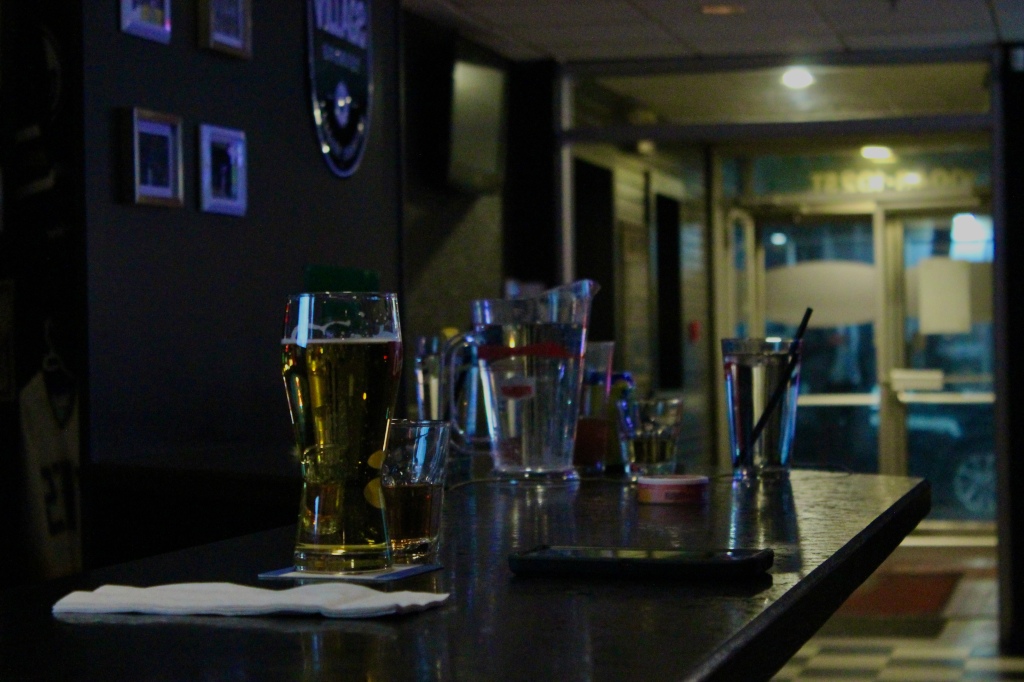
Caine Smith greeted me with a strong handshake and a kind eye. Also a fan of donning western wear unironically—a cornflower blue blazer, square-toed boots, and classic curved-brim cowboy hat—he sheepishly cautioned against the bad rap the words ‘dive bar’ used to carry.
“I think the definition has changed over time,” said Caine.
He started in the industry ten years ago, as a dishwasher. Caine said that back then, dive bars were associated with danger—a place people would go to start fights and get in trouble. He is now the operations manager of a place called The Gardens, just off Jasper.
“Nowadays, ‘dive bar’ is kind of a trendy place to go that’s not as high end, and you can get cheap drinks and cheap.”
The place oozes character. The plank woods floors reminded me of a past life, and the pinball, and the dart board. Pool, I never got very good at, but I still loved to lose. And VLT’s, which are meaningfully absent, are something I never gambled on.
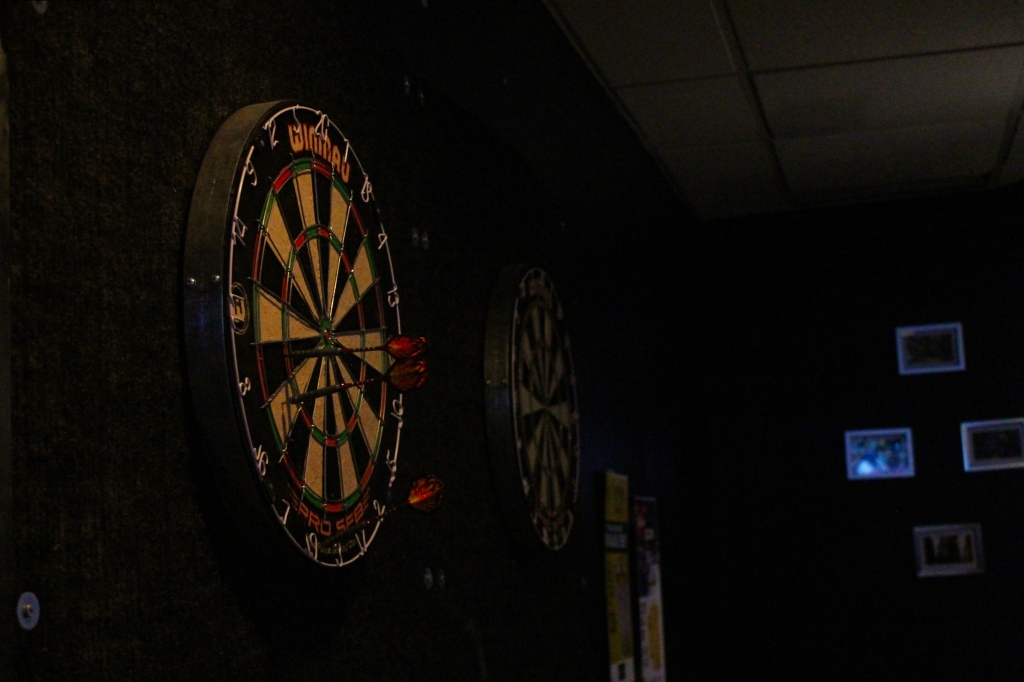
These are things I think of when I think of the words ‘dive bar,’ and YEG locals aren’t strangers to such a scene. Most people seem to have some idea of what it is, but it’s hard to put a finger on it, exactly.
What defines a dive bar? The low light? A sultry, crackling jukebox? Well-loved pool tables? Phone numbers written down on the back of receipts? It’s something that’s emphatically hard to nail down, and Caine agreed with me.
It’s certainly not something easily found in a spreadsheet, either, but it’s a start. There are over 35 000 business licenses floating around in the city of Edmonton, in more than 500 specific categories.
On its own, this is pretty indecipherable. Here, let me clean this chart up a bit, because reading all of it at once is actually anguish:
There, that’s better.
Only 237 of liscenced establishments qualify—loosely—as “bars.” This is to say there are 237 places liscenced to sell alcohol for consumption on-premises. But mixed up in those numbers are hotel cocktail lounges, community halls, casinos, overpriced, gentrified, bougie tourist traps, and sanitized corporate linoleum. Of those 237, how many fit the bill of the dive bar?
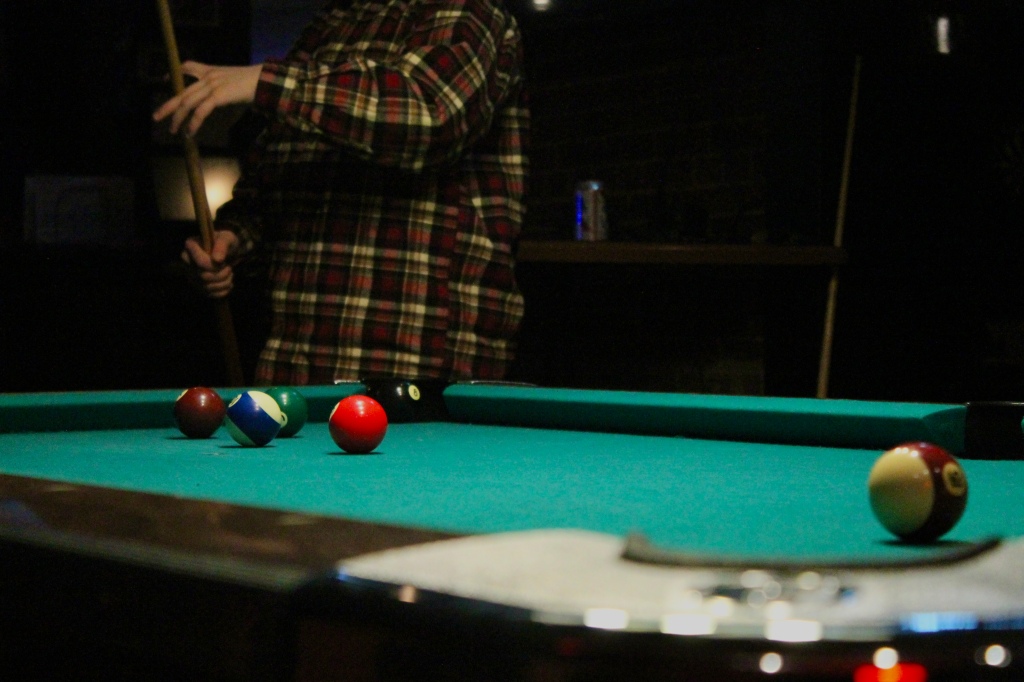
Maybe instead of looking at what they serve, to define a dive, we have to pencil in what they do. Caine says they’re more than just a place to wet your whistle. If it’s not the food and not the beer, what is it?
“I find with most franchise places, you kind of get the generic: generic drinks, the menus are all the same, you don’t get the customer service. In neighbourhood pubs, you make friends with the bartenders. You kind of turn into a family. In fact, one of my regulars became my best friend, and he actually married me and my wife.”
That doesn’t seem to be your everyday bond, and Del Stephen agrees. She’s another seasoned veteran of the industry, working in places that fit every mould and definition on the list. She currently slings tunes instead of drinks as a karaoke at Doyle’s pub, way up in north Edmonton. It’s a joint that bashfully—though lovingly—accepts the ‘dive’ monicker.
Del writes off quite a few of the establishments on the licencing list. They lack the je ne said quoi criteria of what makes these community pubs tick. She says that there’s also the ‘vibes’ factor at play. Dive bars have to ‘feel’ a certain way:
“Not too sleazy, but not too prestigious. People like that. That kind of down-home feel. You don’t have to put on a ton of makeup. You don’t have to wear like a nice suit. You can just go as you are. You’re accepted as you are.”
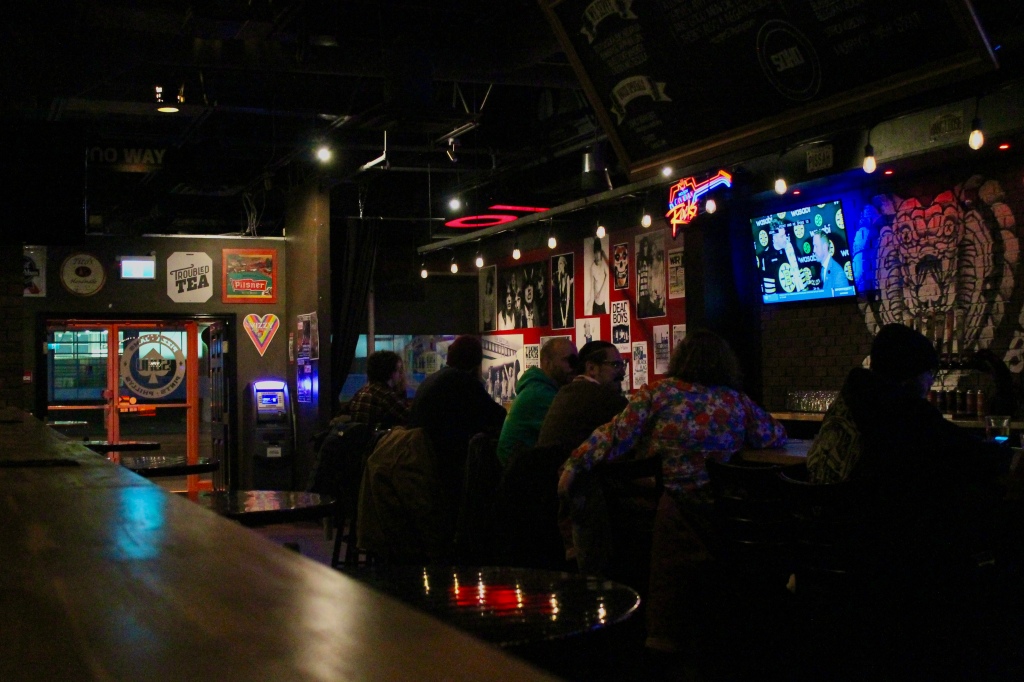
Clearly, it’s about community. Found family. The relationships Caine talked about. And Del couldn’t agree more—it’s the community that forms around these spaces that make it feel this way. People come, learn each others’ names, comiserate, communicate.
“They don’t want to go anywhere else,” she said.
The stumble-distance factor is very much part of it, too. These spaces are social hubs nestled in neighbourhoods—sometimes off the beaten path, sometimes not. But the real common factor is the returning faces that keep things afloat.
Caine had even said that’s a huge factor in how a lot of these businesses slugged through COVID: “A regular base keeps us alive. We see the same faces, like family, friends, faces coming in to visit just to see us. Super important. Not just paying the bills, but becoming family. It’s give and take.”
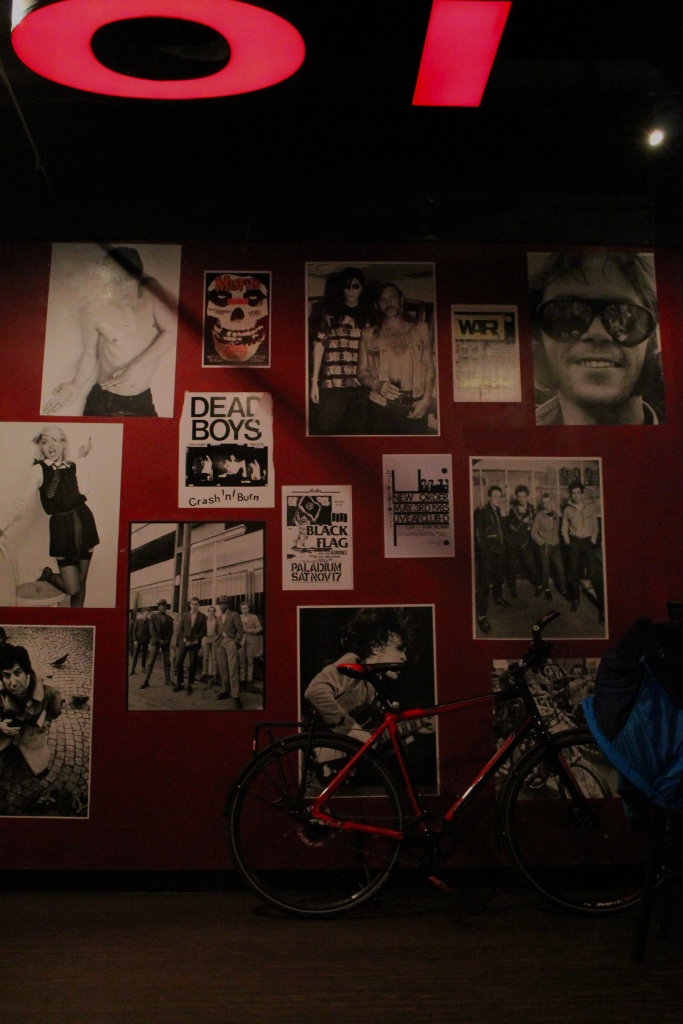
So, to boil this down further, here are the factors of what makes a good dive:
- Locally owned and operated with an atmosphere and aesthetic that brings in regulars from stumbling distance.
- No large corporations, a distinct identity, and definitely a bar first—a social space. Karaoke, pool, and pinball are all optional, but highly recommended.
- Accessibility to the working class. Menu items that won’t break the bank, and, ideally a menu that is small and simple.
- Personality and personability: wait staff will almost certainly be local and build relationships with clients and vice versa. Not because it’s part of the job, but because that’s what human beings are allowed to do. It should be a space where everyone is welcome and feels that they can be themselves.
These factors eliminate many franchises, tourist destinations, most hotel bars, casinos, family restaurants, gastropubs, wineries and distilleries, fine-dining options, some tap rooms, social clubs—places where the emphasis isn’t quite on the same thing you might find at a good dive.
That’s not to say that those options are BAD perse, but they are decidedly NOT dives.
This narrows the list down to just 108 spots. I’ve slapped them onto a convenient (though non-exhaustive) map for your perusal this summer. It’s not a bad place to start.
Editor’s note: (Please do NOT make it your quest to visit all of them)
Back at The Gardens, on an early Wednesday afternoon, Caine looked over his shoulder as I started to pack up and leave.
The radio cooed out some soft, familiar tune, and the pinball machine in the corner chimed away, begging for loonies.
He asked if I wanted a whiskey before I left. I had to decline this time, but I’ll be back.
I’ll be back.
-zd
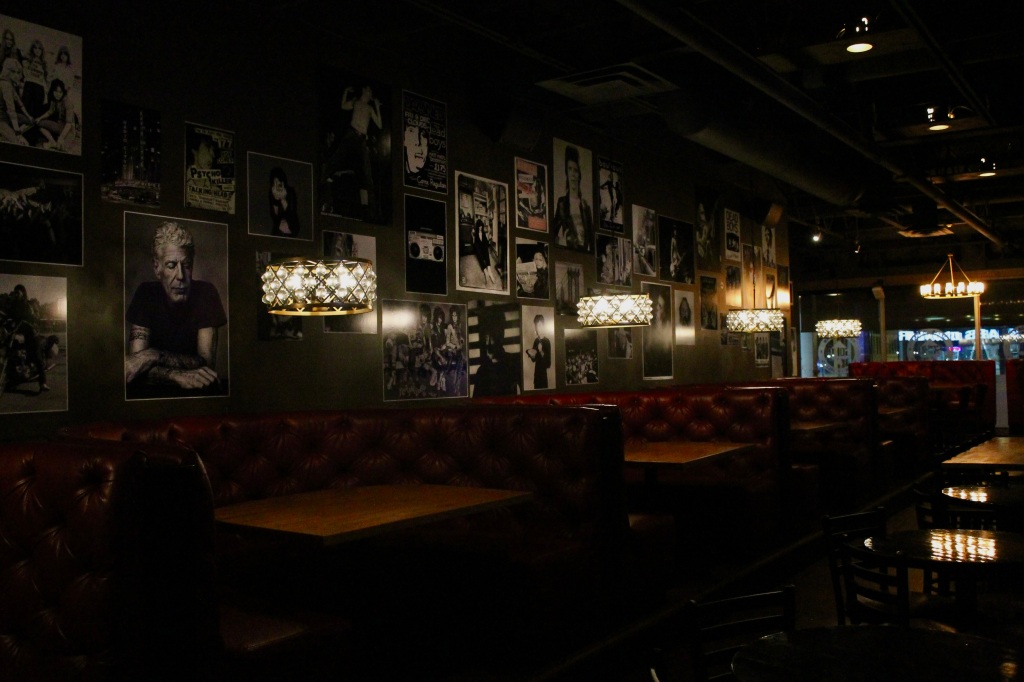

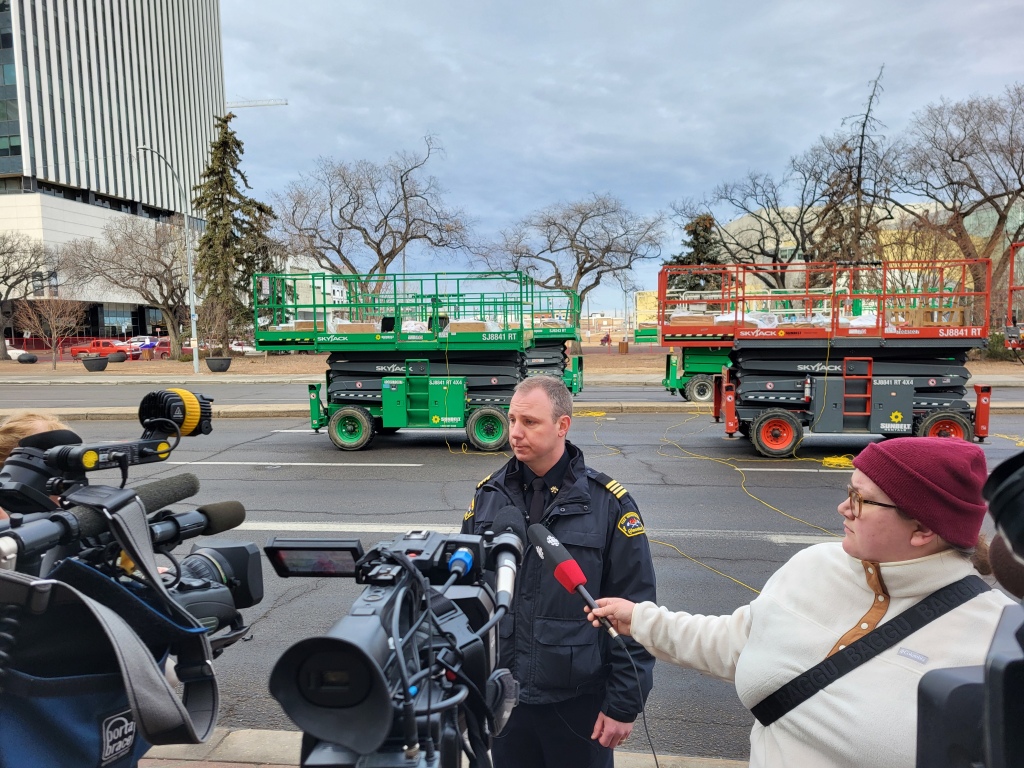
Leave a comment